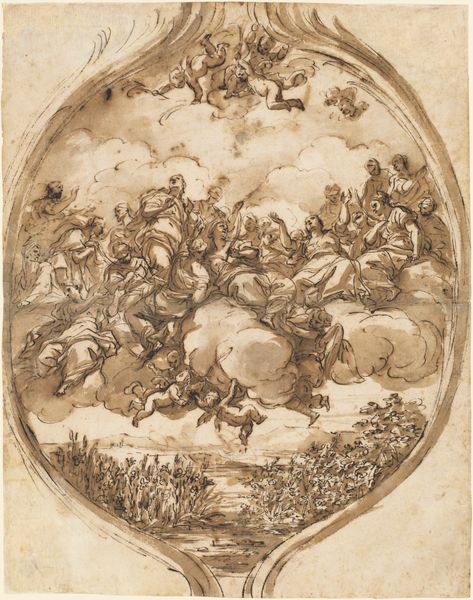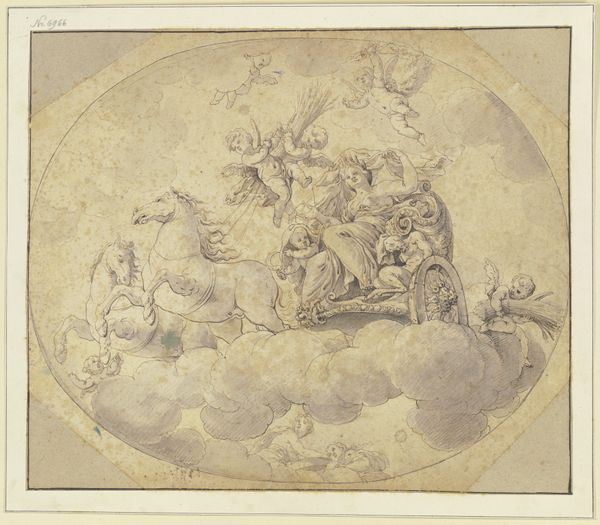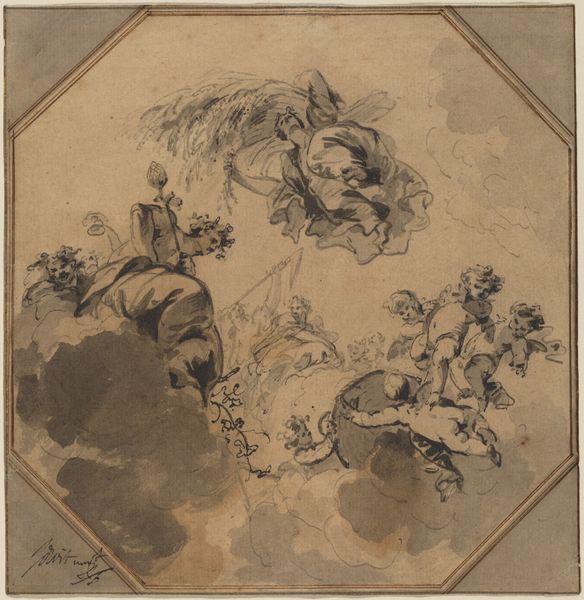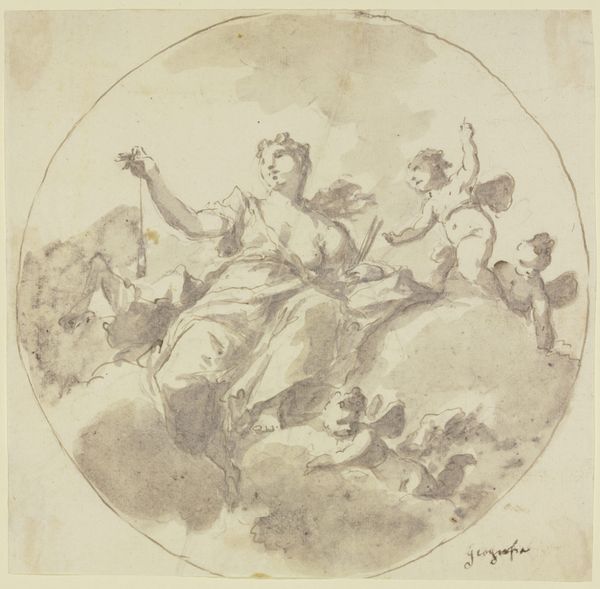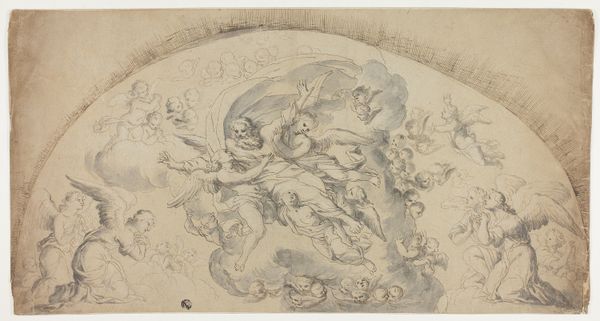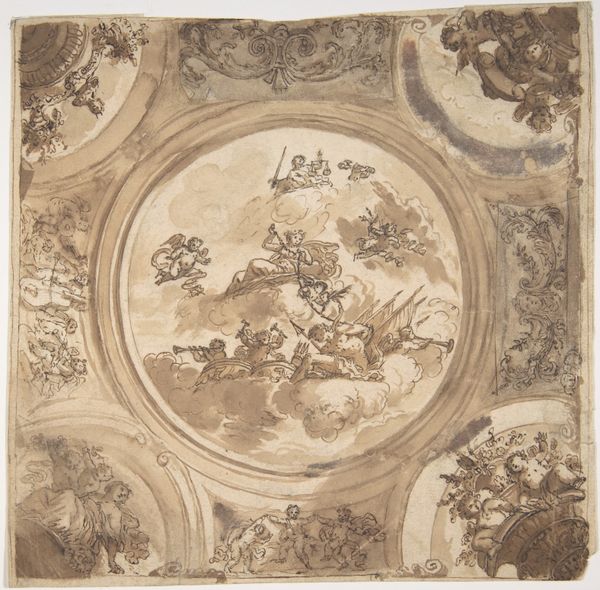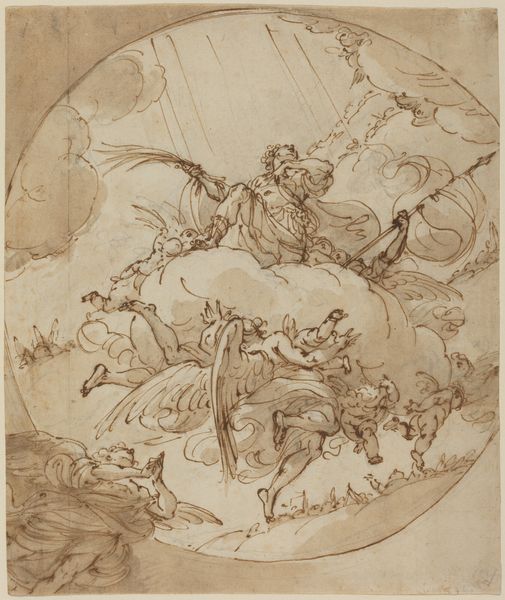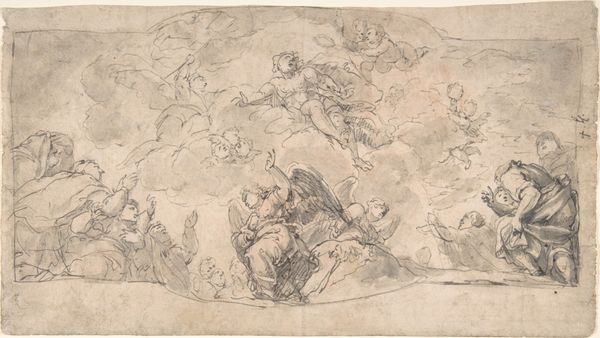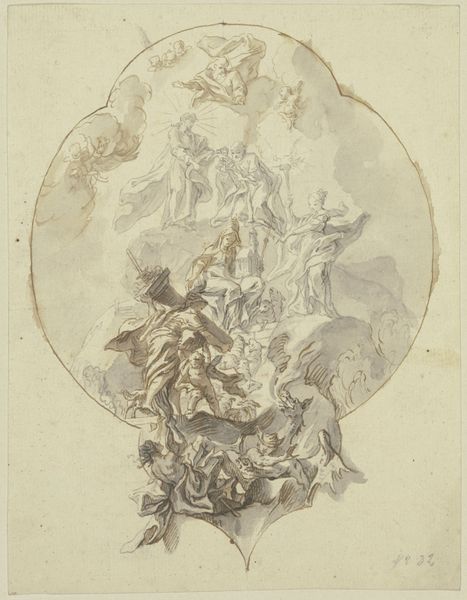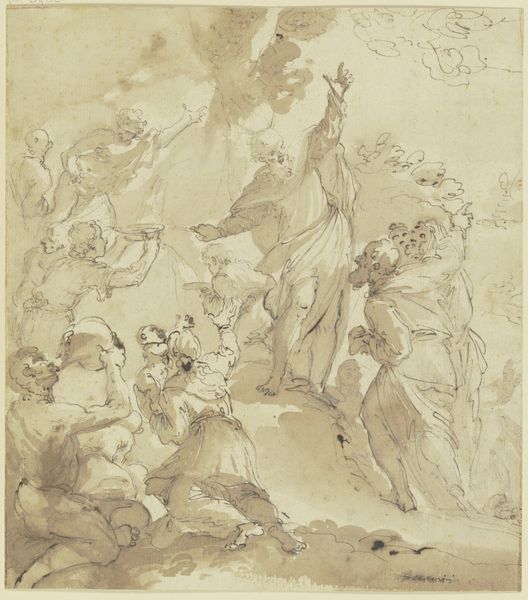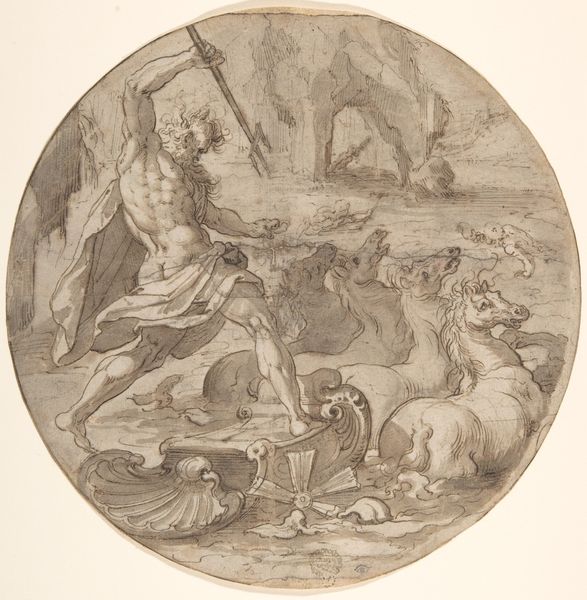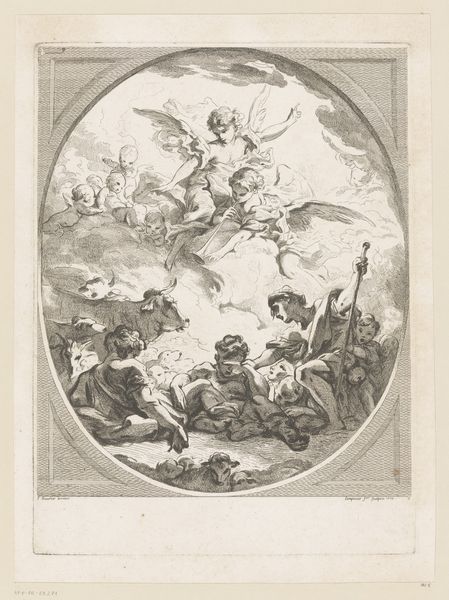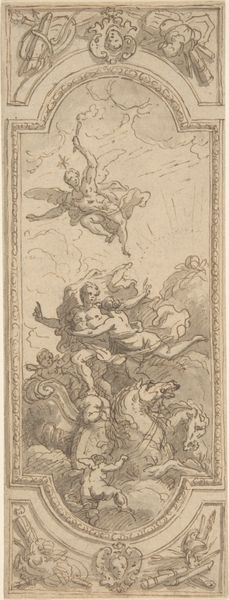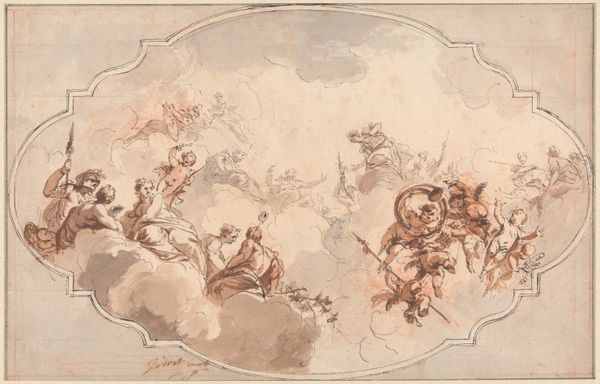
drawing, print, ink, pen
#
drawing
#
ink drawing
#
allegory
#
baroque
#
ink painting
#
pen drawing
# print
#
figuration
#
ink
#
pen
#
history-painting
Dimensions: Diameter: 5 3/16 in.
Copyright: Public Domain
Curator: It's all cherubs and clouds, quite a confection! There's a buoyant energy to this small circular piece. Editor: Indeed. What we have here is "Apotheosis," created by Johann Georg Etgens sometime between 1710 and 1757. Etgens worked primarily with pen and ink to create these intricate drawings and prints. The piece you see before you utilizes ink on paper. Curator: The use of ink, particularly in drawings like this, always interests me. Consider the accessibility of the material itself—the means of production are so simple, a quill and some pigment mixed with water, yet the outcome is so meticulously rendered. It feels almost democratic in its approach to art-making, wouldn't you say? Editor: In a sense, yes. Though remember that access to quality materials, even seemingly simple ones like paper and ink, were dictated by social structures and patronage. Etgens was working within the Baroque period, an era known for its spectacle, grandiosity and allegorical subject matter. How does this drawing reflect such ideals, do you think? Curator: It seems that this "Apotheosis" shows figures rising to a sort of godliness or deification through the use of ethereal materials: clouds. There are clusters of cherubs with light feathery strokes forming a soft base of cloud-like mass, allowing these figures to literally rise up above and beyond the average. It's very visually persuasive. The swirling lines pull the viewer's eye upward. Editor: Right, this notion of "rising above" aligns with Baroque art's public role in reinforcing power, be it religious or secular. The art served to inspire awe, reinforcing social hierarchies and religious authority. Consider, too, the cultural and institutional role this type of idealized imagery played, shaping perceptions of nobility and divinity. Who *are* the noble, elevated figures though, here? It isn't perfectly clear. Curator: True, we can also appreciate this for its mark-making—how those varying ink washes create a sense of depth, and how Etgens transforms humble materials into an artwork of great dynamism. What really stands out is the craft, regardless of any social implications it reflects. Editor: A productive tension, I think. Analyzing "Apotheosis" through both its materials and its socio-political underpinnings offers a fuller understanding, don't you think? It allows us to reflect on art's function then and our interpretation now.
Comments
No comments
Be the first to comment and join the conversation on the ultimate creative platform.
